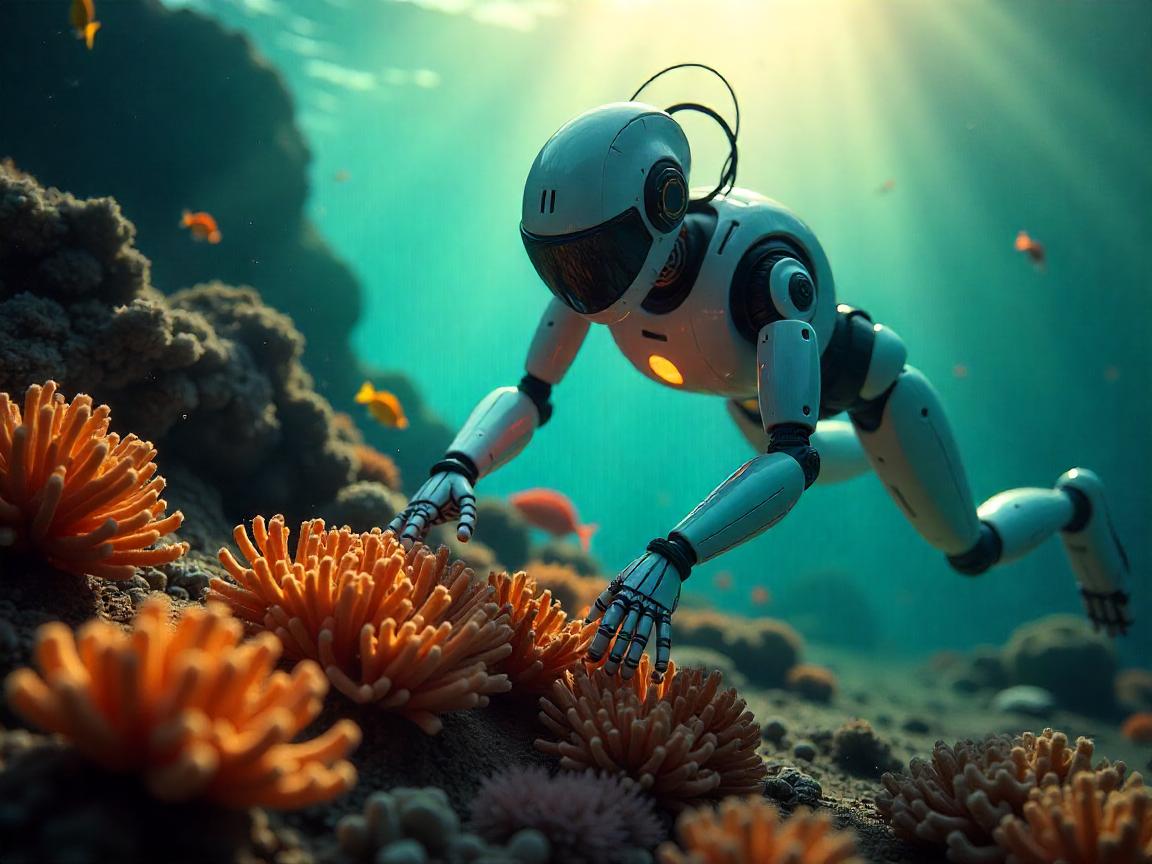
The Silent Crisis No One Sees
Imagine this, a crowded city dwells on the sea with a population of 25% of all sea life is falling down. The richest natural places in the world are the coral reefs which are disappearing at a higher rate than the rainforests. In 2050, 90 percent of it may disappear (NOAA). But as climate change makes all the headlines a secluded revolution is staged under the sea. The new unsung heroes of reef restoration are robots and not scientists. Why is it not top-news? Due to the fact that coral reefs are out of mind, out of sight. However, the technology that resolves this crisis is too innovative to neglect.
Why Human Efforts Alone Are Failing
The idea of coral regeneration is not a new thing. Over the past few decades, a tedious, painstaking process of transplanting fragments of a coral done by divers has reinstructed reefs, inch-by-inch. However, the reality is cruel but it is not enough. Human divers cannot carry out their work in deep waters, and some of the most ambitious initiatives such as example with Florida Reef Tract rescue do not cover more than 0.1% of destroyed territories (Mote Marine Lab). In the meantime, the marine environment is becoming acidic and warmer than we can keep it at.
Enter robotics. Robots do not require oxygen tanks and breaks. They are able to work at depths that are deadly to humans, they can work 24 hours a day, and with surgical precision. In case of the Great Barrier Reef: 6 football fields of coral were re-grown in a decade with traditional techniques. In fact it only took 6 months to do so by a single underwater drone, LarvalBot (QUT). Numbers never lie-scaling cannot be achieved without technology.
The Rise of the Reef Robots
LarvalBot: The Underwater Gardener
It was like a Roomba, but instead of cleaning floors, it cleans coral. Australian scientists devised LarvalBot that releases million of coral larvae into dead zones. In 2021, it rejuvenated 1.5 hectares of the reefs in the Philippines- an activity that would have consumed divers 200+ hours.
RangerBot: The AI Reef Guardian
It is a Tesla in the sea, which hunts the crown-of-thorns starfish, the coral predator, through the machine learning. It reduced starfish explosion by 80 percent in tests where human groups fight in vain to meet the same target.
3D-Printed Coral Cities
Such startups as Reef Design Lab use robots to print biomimetic reefs. Such man-made skeletons are capable of increasing the growth of corals by 400 per cent (Nature Communications).
The thing is that these bots are effective but funding may be not sufficient. Environmental budgets assign less than 0.1 percent funding to ocean conservation (WWF).
Why Isn’t This Tech Going Viral?
Then we are going to present a viral video of a puppy in front of a reef-saving robot. Why?
- Question of visibility: The majority of the population never has a chance to see coral reefs, and, therefore, their degradation remains in the abstract realm.
- Media bias: The stories about the climate concern the ice caps melting, not tiny robotics.
- Deliberately delayed policy: disasters are addressed by governments, rather than solutions to the prevention of the disasters utilizing technology.
Expert Take:
Dr. Taryn Foster (marine scientist):
“All we do is record the extinction rather than avoid it. Our best bet is robotics and we are treating it as a side project in a sci-fi movie.“
The Future: Can Robots Outrun Destruction?
The technology is developing rapidly. The AI reef mappers that were developed by Google have learned to warn about bleaching months before it occurs. The innovative startups such as Coral Vita deploy drones to seed heat resistant super corals. However, this is the harsh truth: despite all the speed-up rates that robots might produce in terms of restoration, they are in a fight against pollution, global warming, and indifference.
Final Thought: The Clock Is Ticking
Underwater robotics is not only a cool technology, but also a life support line. However, these machines alone, will exist where there are no people agitating and funding them. The barrier reefs are not going to scream. Will we hear before it is too late?
So, What You Can Do:
- Fund Reef-tech companies (e.g. Reefgen, Coral Vita).
- Incite changes in policy on marine conservation funding.
- Spread this word. Quiet heroes should be heard.